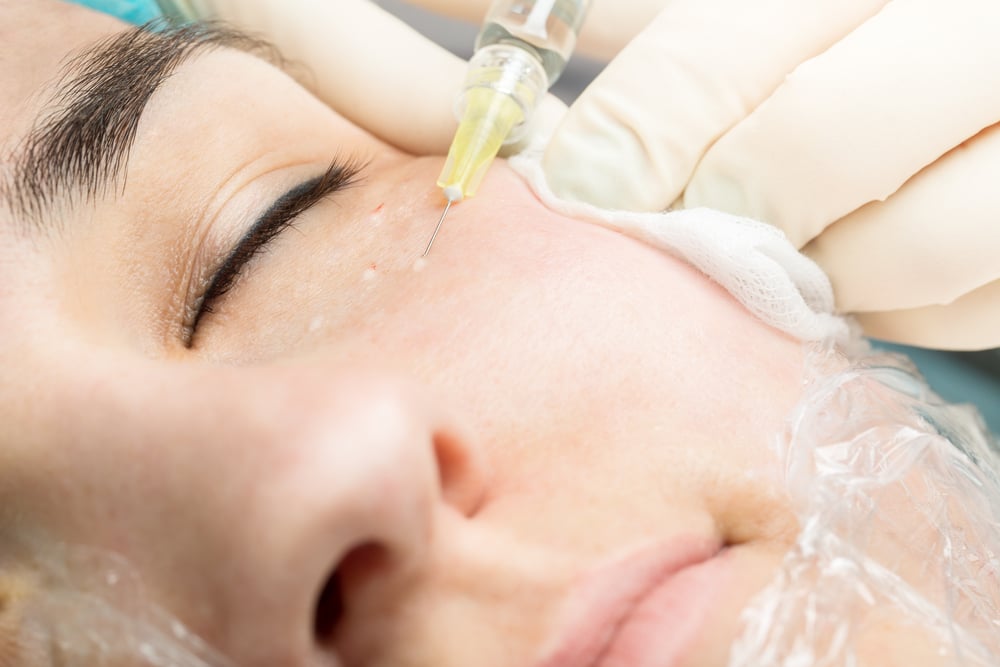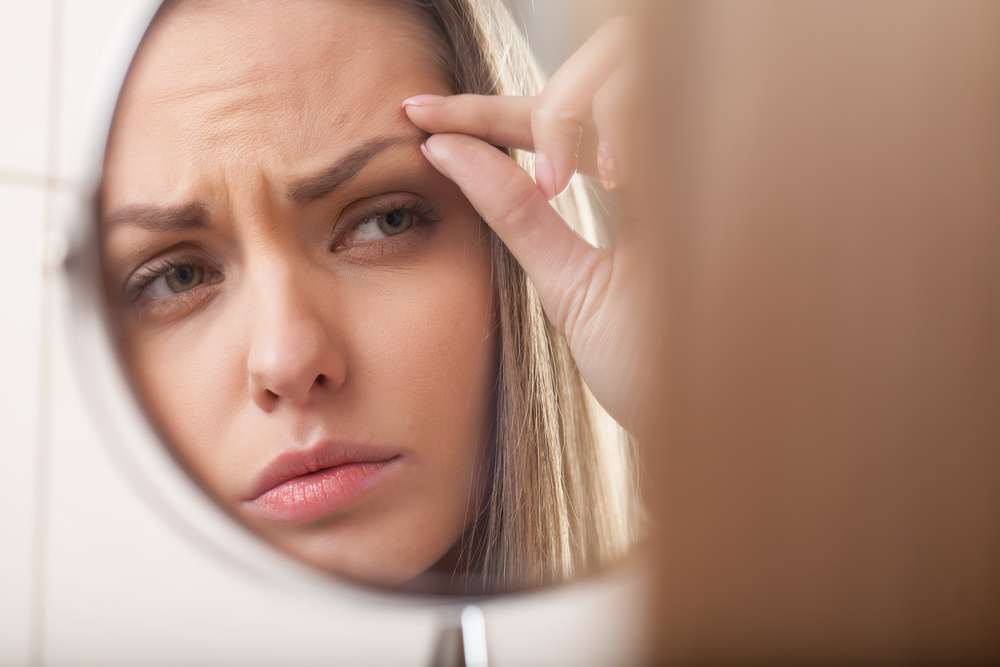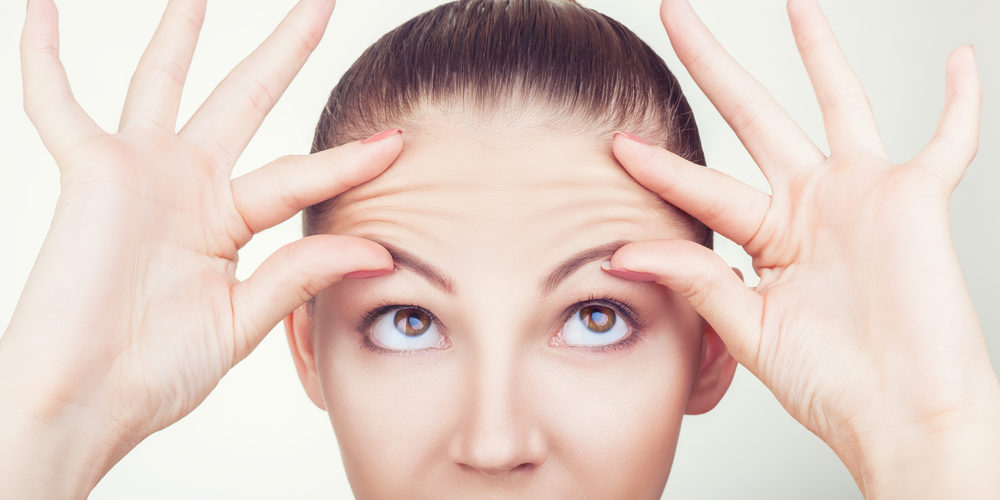If you watch The Real Housewives of New York City, chances are you’ve noticed Bethenny Frankel’s face has changed dramatically over the years. In a recent interview the reality TV star and fearless entrepreneur was asked about her ever-evolving appearance. Her candid answer? Botox… in the jawline. Say what? Botox? In the jaw?
“I do look different,” Frankel told the Daily Mail last spring. “You can see that my jaw has completely changed.” A quick Google image search of Bethenny Frankel does indeed uncover a wide array of photos dating back several years, all revealing what can only be described as a dramatic improvement of her jawline. It shrunk. Her face is now… narrower.
But hang on a second… isn’t Botox supposed to paralyze the muscles? And if that’s the case, how is she able to speak normally and chew her food? How could someone’s face change so much without surgery? For answers to these questions, I spoke with the Skinnygirl’s NYC-based dermatologist, Dr. Howard Sobel, who has worked with the celebrity mogul for years.
“Awareness of these treatments increased pretty substantially after the article on Bethenny was published,” Dr. Sobel told me. “We definitely saw an uptick in patients requesting the same procedure. Even still, most people think of Botox as being strictly for forehead wrinkles, when it’s not. I often mention it during cosmetic consultations now since most people still don’t realize Botox can be an option. A very pointed jawline will produce a more dramatic result.”
Not long after Bethenny Frankel came out about her treatments, a fellow reality star, Lala Kent from the show Vanderpump Rules, also made headlines for undergoing the same unusual procedure. “Now I have a chin!”, she excitedly cried out to the world.
Miss Kent announced her motivation to undergo the procedure in an Instagram video that quickly went viral. “I know a lot of people started tripping yesterday when I said I was going in to get Botox for my lips, chin and jawline. But here’s the thing; we all know our angles when it comes to the camera, and I’ve always had an issue with the fact that I’ve never had a great jawline, a great chin”.
Botox: not just for wrinkles
Montreal-based plastic surgeon Dr. Sandra McGill says that this “trend” is nothing new and that unbeknownst to most of us, has been around for a looong time. “I guess people are just becoming more aware of it now”, says McGill.
Botox injections to the chin – also known as chintox – improve the chin’s appearance by adding roundness to it, tipping it outwards, or getting rid of the wrinkly, dimply effect some people have. These less common uses of the botulinum toxin’s neuromodulation properties act by interfering with the transmission of the signal from nerve to muscle, preventing the nerve from telling the muscle to contract.
Over time, a muscle that isn’t contracting will actively get thinner. Explains Dr. McGill, “Botox is used for many different reasons and anytime we have a muscle that’s causing a negative impact, we can weaken that muscle with Botox and modulate the impact. We’re all used to thinking of Botox for frown lines. If there’s a muscle in your head that’s causing a line, weakening that muscle will take that line away.”
Botox is used to treat many problems caused by muscle movement, for example the esophagus: physicians can inject their patients with Botox in order to relax the lower esophageal sphincter for those suffering from achlasia, a condition which prevents food from passing into the stomach. And teeth grinders, take heed! Botox in the jawline will actually improve your condition.
Dr. McGill continues: “The other added benefit of using Botox in this area, other than to contour the lower face, is that it relieves bruxism [aka teeth grinding], which can cause the muscle at the corner of the jaw to get big and thick. Some people are just genetically made that way while for others it comes from grinding their teeth – after all, the more you work a muscle the bigger it’s going to get, just like when you go to the gym. So when you use Botox to weaken the masseter muscle, which is employed when chewing, the muscle gets thinner and atrophies, tapering the jaw and reducing the width of the face. And it definitely improves bruxism as well.”
Let’s not forget that left untreated, years of grinding and clenching can cause tooth sensitivity, decay, and eventually lead to permanent pain and damage to the jaw point, on top of being a red flag warning for sleep apnea, which can lead to serious health complications. In other words, this is something teeth grinders need to address, STAT!
Tapering the jawline with Botox: Frequently Asked Questions
Once the muscle is weakened, how can one chew or talk properly?
“We have a muscle in our jaw which make us chew; it’s called the masseter muscle”, informs McGill. “It’s one of four sets of muscles that are involved in opening and closing the jaw. Since some muscles required for chewing are essentially redundant, weakening the masseter muscle won’t interfere with your ability to chew because other muscles will take over. We don’t give enough Botox to make it totally dysfunctional, it’s just weakened”, stresses the veteran Montreal-based plastic surgeon.
How many injections does it take?
Some doctors say that a few sessions are required, some charge a flat fee, and other charge per Botox units. As for Dr. McGill, her fee is a flat $500, although touch ups might be required every six months. 50 units is the standard dose, but if your jaw muscle is particularly big, more Botox and visits to the doctor’s office will probably be necessary. Should Botox also be injected in the chin, typically 10 units of the drug will be required.
“Botox in the chin can be really beautiful,” notes McGill. “That said, I don’t like to inject a lot of Botox. I normally take ten units, dilute them, and spread it out so I get a nice even relaxation of those little dimples. I like to apply it very, very superficially, not to affect someone’s ability to chew and/or move – except when the person’s skin is being pulled down by those muscle fibers”. Make sure to inquire about the price before you commit to any one surgeon, as it varies wildly from one practice to another.
How long does it take to see results?
The whole procedure is usually over in less than 20 minutes and one can go back to work immediately afterward. Bruises and inflammation are uncommon, you can walk right out of the doctor’s office and nobody will notice anything. The drug takes 7-10 days to take effect and once it does it takes about 4 weeks for the muscle to start thinning down. Here’s another sneaky but huge benefit: it’s the easiest, fastest way to look like you lost a few pounds. Yes, you read that right. “It does have a slimming effect,” confirms McGill.
Who is it for?
According to Dr. McGill, males and females of all ages have had this procedure done, but one demographic stands out in particular: Asians. “It’s just the shape of their faces, which are typically wider in the lower half. Consequently, the procedure has grown increasingly popular among the Asian community. There seems to be more awareness about it as well.”
In spite of all the procedure’s advantages, one needs to have realistic aesthetic aspirations as well. The bigger the muscle, the more dramatic the results. In other words, if you have a naturally large square jaw because of your jaw bone, there’s a limit to what can be done without surgery. Finally, a word of caution: the width of your face is determined by the jawbone itself, the thickness of the masseter and the amount of cutaneous fat. This treatment only affects the thickness of the muscle, so ultimately it’s only that element which will be reduced.









